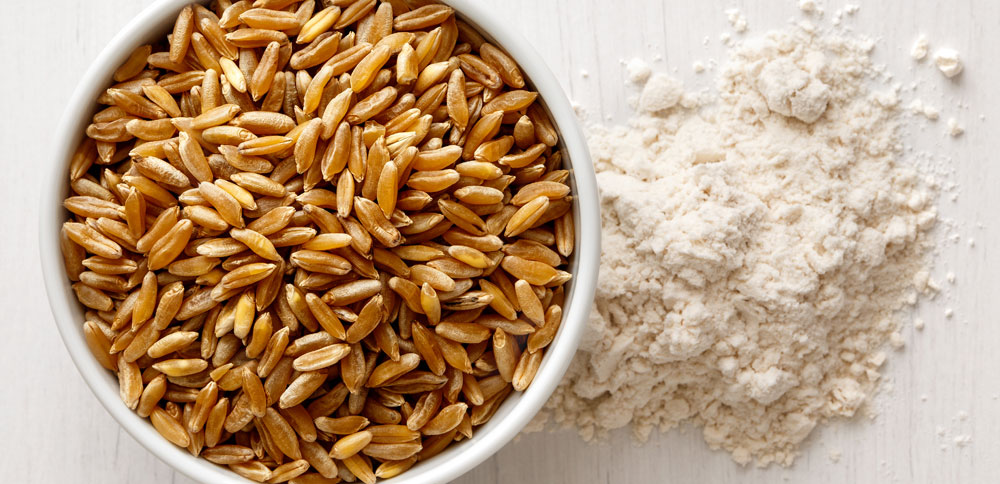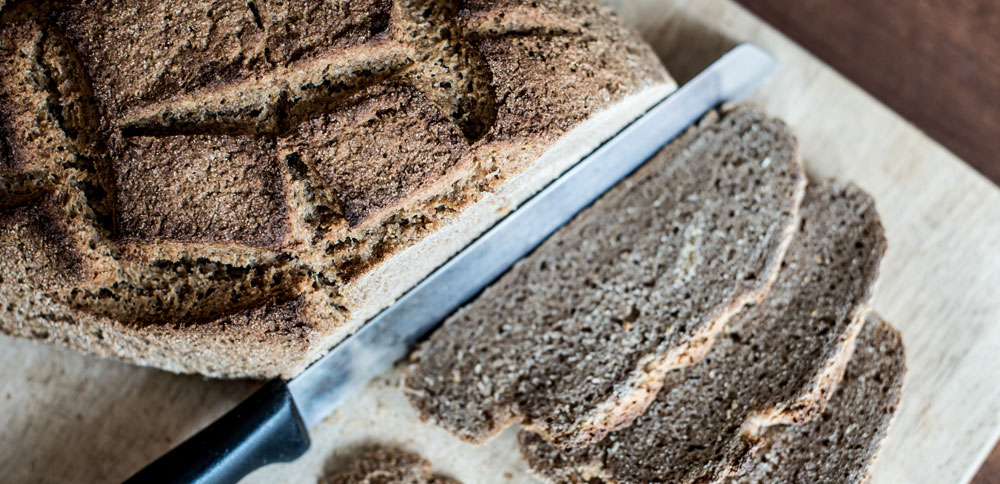
What the Heck is Kamut?
Kamut also known as Khorasan wheat is simply an heirloom variety of wheat, originating from the Middle East with historic ties to Egypt. This ancient grain’s recent popularity seems to come from the interest among health-conscious consumers, as it’s touted as having more fibre, more protein (up to 40% than modern wheat) and many essential vitamins and minerals (1). It has a rich nutty flavour and is larger than modern wheat. Curious? Let’s explore – what the heck is kamut?
Kamut and Health
Remember kamut is wheat; therefore, it does contain gluten. Consequently, it’s not suitable for a gluten-free diet. In addition to fibre and protein, an 1 ½ cup (375 mL) of kamut delivers a good source of magnesium, phosphorus, zinc, niacin, and a small amount of potassium. Similar to all whole grains, there are potential digestive and heart health benefits of kamut (1).
Digestive Health
Whole grains have long been associated with digestive health based on their insoluble fibre content and increased gut transit time. Recently, more research is being dedicated to the impact of whole grains on the gut microbiome. According to an article published in 2014, kamut may have an impact on the gut microbiome (2). In this study, 30 healthy volunteers agreed to either consume a kamut or durum wheat diet for three months. The results showed that the group that consumed the kamut diet had more compounds (short-chain fatty acids and phenol compounds) that promoted healthy bacteria in their gut microbiota. The control group (i.e., durum wheat diet) had an increase of less favourable compounds including alcohols (e.g., isopropyl alcohol) in their gut microbiota. Additionally, the group that consumed the kamut diet showed a slight presence of a health-promoting co-abundance group (CAG). Further research is necessary to accurately determine the true prebiotic potential of kamut on the gut microbiome.

Heart Health
A study published in the European Journal of Clinical Nutrition in 2013, explored kamut and the impact on cardiovascular risk factors (3). In this small study with 22 adult participants (14 females and 8 males), the results showed that consumption of kamut products compared to semi-whole grain products reduced the following: total cholesterol; LDL (low-density lipoprotein) cholesterol; blood glucose; and circulating levels of PRO-inflammatory cytokines. Results also showed that consumption of kamut improved serum potassium and magnesium levels. Therefore, it can be concluded when kamut, replaces semi whole grain products in the diet on a daily basis, it could have a positive impact on cardiovascular risk factors.
What’s Next?
I believe it’s important to make people better aware that kamut is wheat and contains gluten. Also, further research is necessary to identify the exact compounds in kamut that are health promoting and what the recommended serving size is needed to show results in both well and people with disease. In addition to awareness, and further research, kamut’s availability has increased over the past five years and its price has decreased. For example, a 680 gram bag can retail for about $4.15. If you have added kamut to your healthy diet, let me know your thoughts about the flavour, texture and how you use it!
I’d love to assist your company to get into the latest food trends or speak at your upcoming
event to share my experience as a food expert and entrepreneur. Click here to learn more.
References
- Richwine K. Why ancient grains are a modern craze. University of Delaware food and nutrition education lab. 2016. Retrieved from: http://sites.udel.edu/chs-udfoodlab/2016/04/08/why-ancient-grains-are-a-modern-craze/
- Taneyo Saa D, Turroni S, Serrazanetti DI, Rampelli S, Maccafferri S, Candela M, Severgnini M, Simonetti E, Brigidi P, Gianotti A. Impact of kamut Khorasan on gut microbiota and metabolome in healthy volunteers. Food Research International. 2014; 63:227-232.
- Sofi F, Whittaker A, Cesari F, Gori AM, Fiorillo C, Becatti M, Marotti I, Dinelli G, Casini A, Abbate R, Gensini GF, Benedettelli S. Characterization of Khorasan wheat (kamut) and impact of a replacement diet on cardiovascular risk factors: Cross-over dietary intervention study. European Journal of Clinical Nutrition. 2013; 67: 190-195.
Copyright © 2018 Jane Dummer | All Rights Reserved

